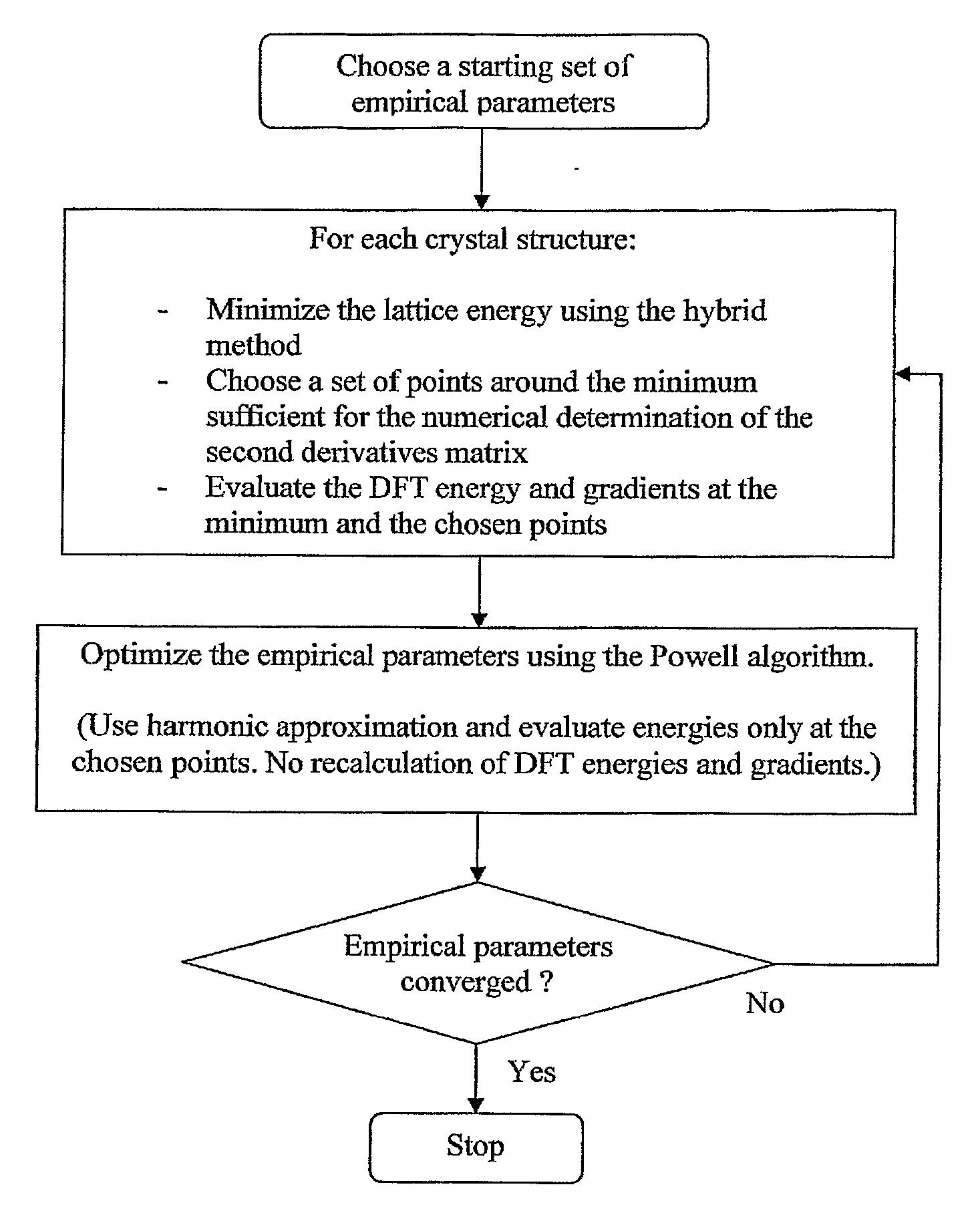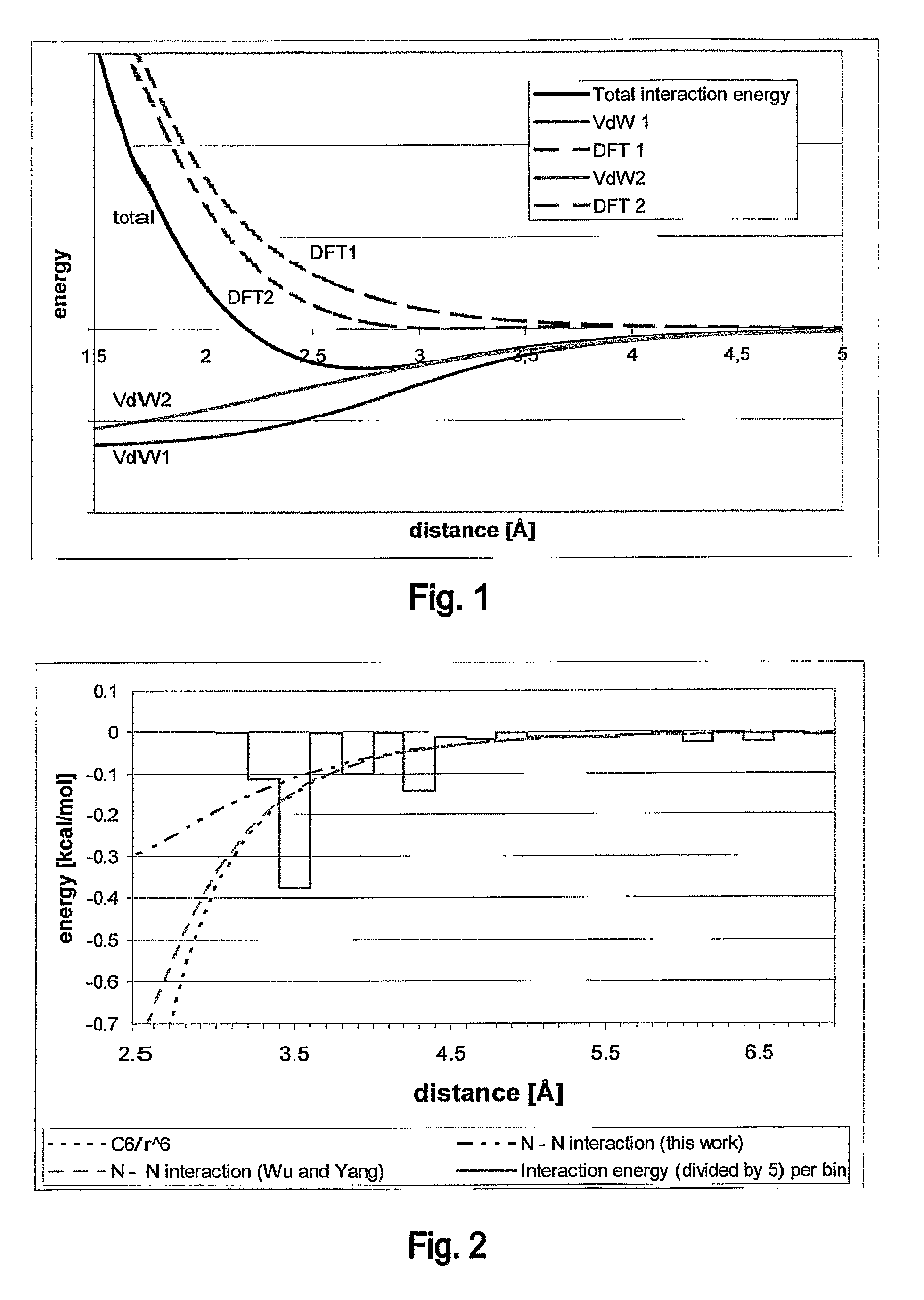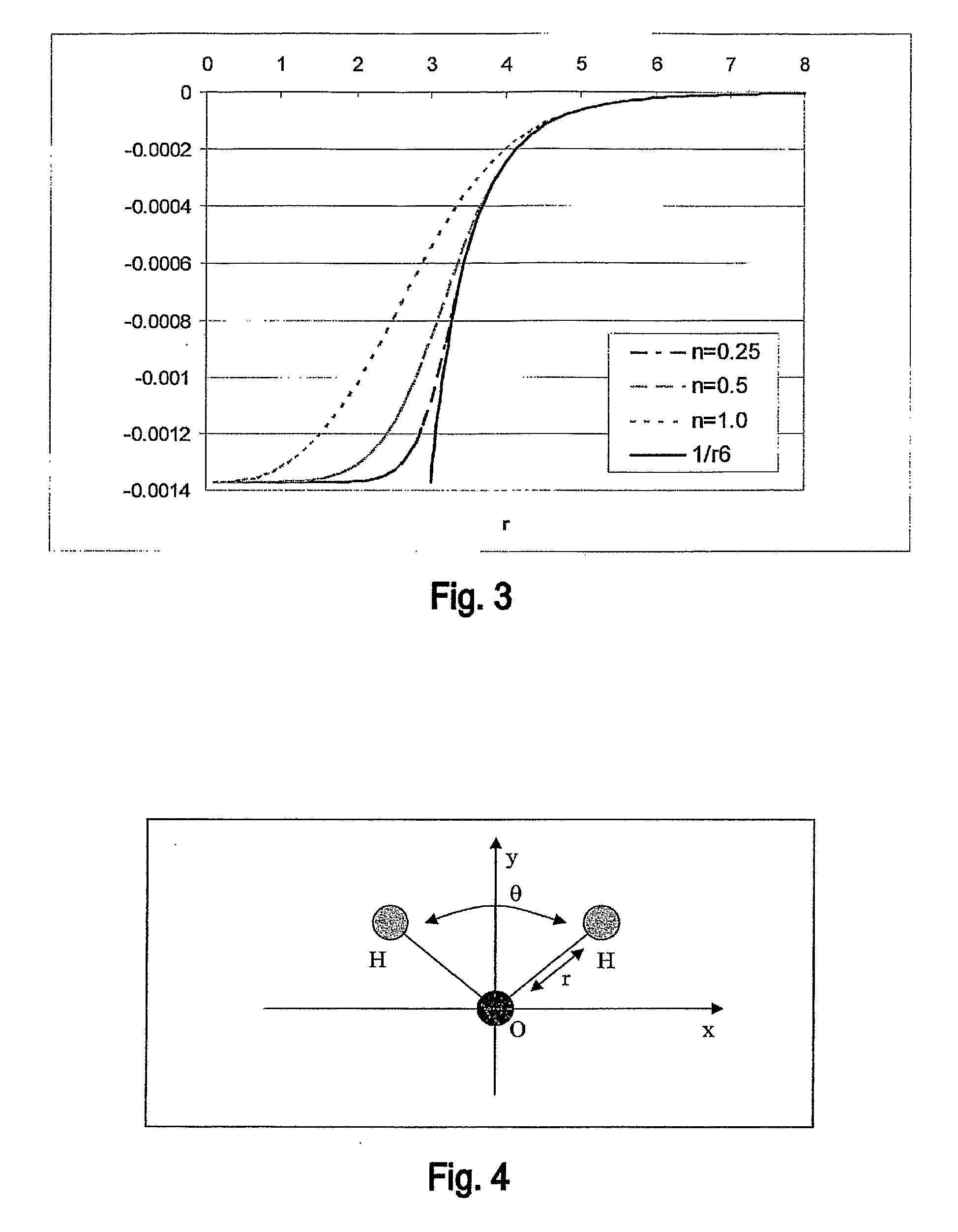Method for energy ranking of molecular crystals using dft calculations and empirical van der waals potentials
a technology of energy ranking and molecular crystals, applied in the field of energy ranking of molecular crystals using dft calculations and empirical van der waals potentials, can solve the problems of increasing the requirements for cpu time, affecting the accuracy of basic hf calculations, and not being very accura
- Summary
- Abstract
- Description
- Claims
- Application Information
AI Technical Summary
Problems solved by technology
Method used
Image
Examples
case 1
, we have not come across an atom within the molecule that is related to the atom i in the asymmetric unit of the crystal. We add the atom j to the atoms in the molecular asymmetric unit. The atom gets a new index j′ which is equal to the current number of atoms in the asymmetric unit. We set cry(j′,mol)=i and at(i)=j′. For the symmetry elements that relate atom j′ in the molecular asymmetric unit to atom i in the asymmetric unit of the crystal we obtain: S~_i=S_i,m, s~_i=s⇀i,m+t⇀i,m,j(Eq. 5.4.4.v)
[0176] The position of atom j′ in the molecular Cartesian coordinate system is:
{right arrow over (θ)}j′,0= R0−1 L0( x′j−{right arrow over (T)}0) (Eq. 5.4.4.w)
[0177] Symmetry allowed atomic move directions for atom j′ can be obtained from the following equation: υ→j′,k′=R_0-1L_0S~_iW_ie→k, 1≤k≤σj′, e→k=(100)←k(Eq. 5.4.4.x)
[0178] Here only such vectors {right arrow over (e)}k are allowed that are compatible with the definition of the relevant (non-zero) components of the vector...
case 2
[0180] We have already come across an atom {tilde over (j)} that is related to the m′-th symmetry copy of atom i in the asymmetric unit of the crystal by (Eq. 5.4.4.u). The atom {tilde over (j)} has become atom {tilde over (j)}′ in the molecular asymmetric unit. The atom j currently under consideration is a symmetry copy of atom {tilde over (j)}′. We thus increase the number of symmetry copies μ of {tilde over (j)}′ by one. The new symmetry operation is given by:
Γ{tilde over (j)}′,μ= R0−1 L0 Si,m Si,m−1 L0−1 R0 (Eq. 5.4.4.y)
[0181] The procedure outline above is repeated until all atoms of the molecule have been assigned to an new atom in the molecular asymmetric unit (case 1) or to the symmetry copy of an existing atom in the molecular asymmetric unit (case 2).
5.4.5 Delocalized Internal Coordinates
[0182] In the previous section, we have defined the intramolecular degrees of freedom in terms of atomic displacement parameters ζi,j where the index i refers to the atom number in th...
PUM
 Login to View More
Login to View More Abstract
Description
Claims
Application Information
 Login to View More
Login to View More - R&D
- Intellectual Property
- Life Sciences
- Materials
- Tech Scout
- Unparalleled Data Quality
- Higher Quality Content
- 60% Fewer Hallucinations
Browse by: Latest US Patents, China's latest patents, Technical Efficacy Thesaurus, Application Domain, Technology Topic, Popular Technical Reports.
© 2025 PatSnap. All rights reserved.Legal|Privacy policy|Modern Slavery Act Transparency Statement|Sitemap|About US| Contact US: help@patsnap.com



